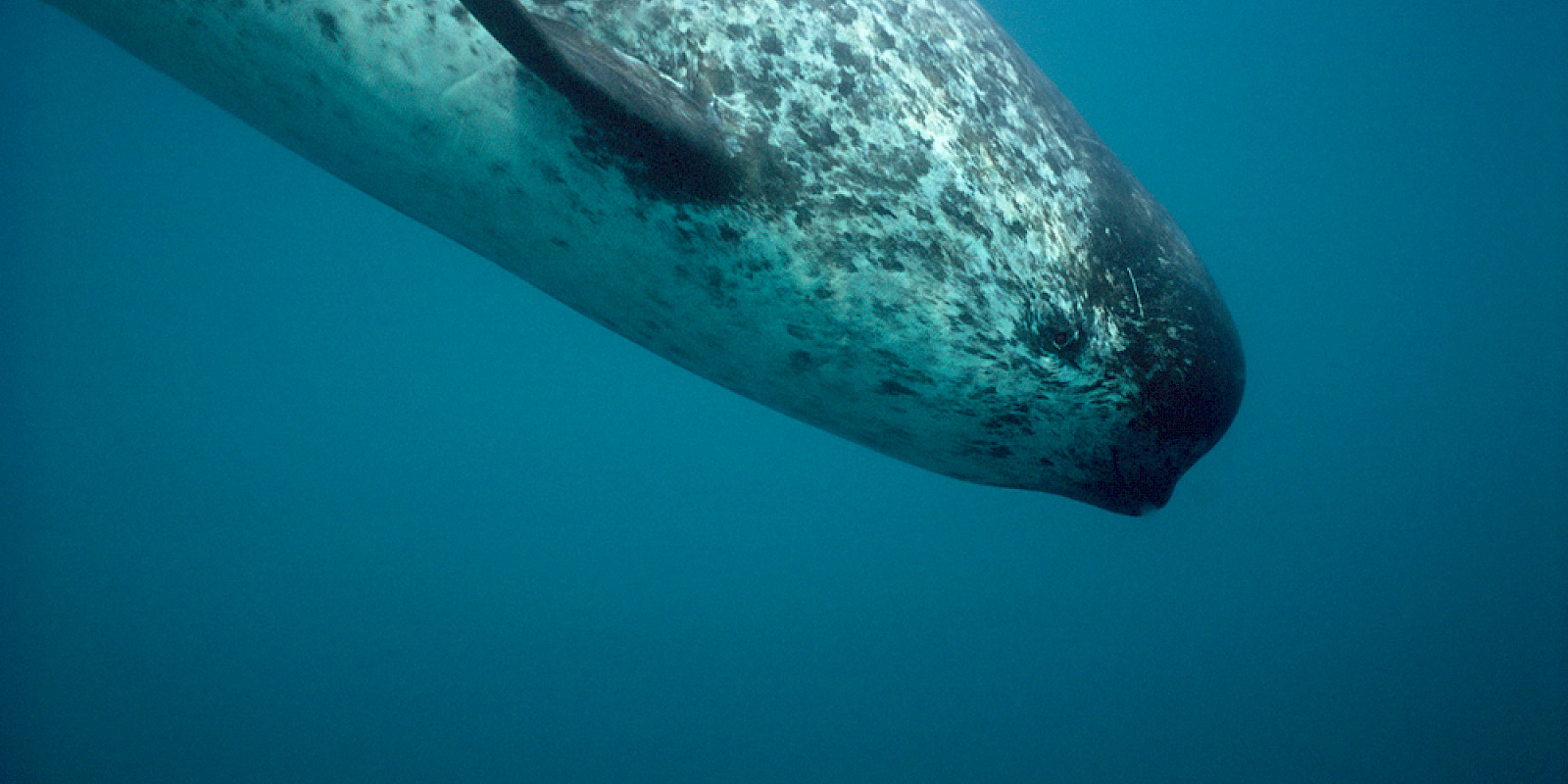© Paul Nicklen / National Geographic Creative / WWF-Canada
Features
Decoding narwhal migration: Insights from a two-decade tracking study
- Narwhal
Narwhals’ migration routes are not merely arbitrary paths used for swimming from summer to winter habitats. They are strategies used by the animals to make the most of resources they need, such as food and shelter from predators. As with other Arctic whales that mate and give birth during migration, narwhals are carrying out important life activities too – resting, feeding, and likely more. Protecting these blue corridors to safeguard narwhal on their journeys is essential, especially where they encounter human activities such as shipping.
A recent study sheds new light on narwhal migration behaviors, their choice of migration routes, and the factors that influence these patterns. Using two decades of tracking data, researchers found that narwhal use different migration tactics to minimize the energy required for their journeys.
Narwhal undertake their migrations either in the offshore or nearshore environment, but what determines their selection of a specific migration route? Surprisingly, it is not influenced by factors such as departure timing, size, or sex of the individual. Interestingly, nearshore migrators have distinct behaviours compared to their offshore counterparts. They utilize specific stop-over locations in fjords, where they rest and feed, while offshore migrators exhibit more complex movements, potentially linked to feeding activities. These migration routes may even be culturally inherited, remaining consistent within individuals over multiple years.
The persistence or consistent nature of migration movements is influenced by various environmental factors. Ice concentration, bathymetry (depth to the sea floor), and slope (topography of the sea floor) all play a role. Sea ice, in particular, plays a role in influencing the movement patterns of narwhal, with areas of higher ice coverage leading to less directed movement patterns. Additionally, nearshore migrators demonstrate stop-over behaviors where they would stop and rest for a few days to a few weeks in regions with higher slopes and deep waters along the coast of Baffin Island, whereas offshore migrators transit along steep continental shelf slopes.
Human-induced disturbances, such as shipping and resource extraction, can disrupt narwhals’ migration routes, emphasizing the need for management measures to mitigate these disturbances. It is vital to identify and protect the important areas utilized by narwhals during migration, not only for their sake but also to safeguard the overall ecosystem.
We spoke to Courtney Shuert, the lead author of the study and asked her a few questions.
The study indicates that narwhal use certain stop-over locations which may indicate that they are important areas for feeding or resting. What does this tell us?
Many of the areas that these narwhal migrate through and stop-over at include areas that are known to be important areas. Many of these stop-over locations are important summering areas for narwhal in other populations and a wide variety of other species. These fjords are known to be very productive areas, hosting high levels of biodiversity and species richness. While it was not possible evaluate feeding behaviour directly, it is likely that these areas are important resources resting or feeding. Several narwhal seem to use these areas for several days, or up to two weeks sometimes.
In what ways do human activities, particularly shipping, disrupt narwhal migration routes? Are there any specific examples or incidents that highlight this issue?
We are still learning about the impact that shipping has on narwhal. Tagging data and observations highlight that narwhal are particularly attuned to shipping noise, especially large ice breakers or cargo ships, and are known to change their behaviour to the sound of ships from great distances, even when the sound of ships is embedded in the background noise. It is this evidence that suggests that the noise from an increasing presence of large ships may disrupt important activities like feeding or change movement patterns, especially when crossing the migratory corridors in space and time.
Often the summering and wintering ranges of migratory species are well protected, but rarely do migration corridors and stop-over sites receive the same level of protection, especially when crossing international or regional borders. What can be done?
Understanding where species go and how predictable routes may be is the first step to applying relevant conservation measures. Uniting information on movement ecology across multiple species is then the next step in the puzzle. Many species often share migratory corridors – understanding this means that we can apply conservation measures to benefit more than one species. While we have only presented part of the picture here, weaving together all ways of knowing gives us the best picture of migration available and will help to facilitate lasting and effective measures.
What are some of the potential long-term consequences if narwhal migration routes are not adequately protected or if climate change continues to disrupt their habitats? Are there any broader ecological implications that we should be aware of?
We know from terrestrial species that disruptions to migratory corridors can cause populations to become increasingly fractured, resulting in a multitude of knock-on effects, especially when faced with physical barriers to migration. For narwhal, migration behaviour is tied to sea ice dynamics and ongoing changes to the sea ice conditions, and especially it’s predictability, across their range will surely impact narwhal and other species. Changes in migration timing have already been noted for this same population of narwhal, indicating that they can exhibit behavioural flexibility within single lifetimes, but how far can this flexibility be used to continue to adjust to the new normal?
By WWF Global Arctic Programme
